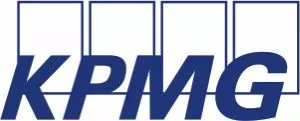The Federal Inland Revenue Service (FIRS) recently issued Information Circular No.: 2021/20 ("the Circular") on extension of the meaning of "in use", pursuant to the provisions of Paragraph 16 of the Second Schedule to the Companies Income Tax (CIT) Act Cap. C21 LFN 2004 (as amended).
The Circular provides guidelines on claim of capital allowances (CA) on capital work-in-progress (CWIP) and assets in periods of temporary disuse, in line with Paragraph 16 (1 and 2) of the Second Schedule to the CIT Act
We have provided below, a summary of the key aspects of the Circular:
1. Definition of CWIP
The Circular defines CWIP as "the total accumulation of cost incurred on owned assets on which construction or production has not been completed as at the date of Statement of Financial Position (i.e., as at balance sheet date)." Therefore, the cost incurred on such assets may not be recognised as qualifying capital expenditure (QCE) until the asset is ready for use.
2. Definition of asset in a state of temporary disuse
The Circular provides that an asset will be deemed to be in a state of temporary disuse where:
- the asset is undergoing major repairs;
- the company that owns the asset is dormant or in a state of recession and the asset is in a state of redundancy; and
- there is a force majeure due to unforeseen circumstances.
3. Conditions for claiming CA on CWIP and asset in temporary disuse
The Circular outlines the following conditions for a company to claim CA on CWIP:
- The expenditure must relate to qualifying building; manufacturing industrial plant; construction plant (excluding furniture and fittings); plant (excluding furniture and fittings); mining; plantation equipment; ranching and plantation; agricultural plant; and housing estate
- The asset must be for the purpose of the trade or business
- The cost on each asset is recorded in separate work-in-progress accounts
- The construction or production of the asset must be partially completed, and
- The completed portion of the asset must have been put to use.
Based on the above, capital expenditure incurred on completed assets that have not been put to use in generating taxable income will not form part of QCE for CA purposes. Consequently, a company may claim CA on the completed portion or part of a partially completed QCE, provided that the completed part has been put to use in generating the taxable income of that trade or business. The Circular also outlines eligibility criteria which must be met by taxpayers before they can claim CA on CWIP.
Relatedly, a company may claim annual allowance on an asset in a state of "temporary disuse" at the prescribed rates in the CIT Act, given that it would have claimed initial allowance on the asset prior to the state of temporary disuse.
4. Procedure for Granting CA on CWIP
Taxpayers that wish to claim CA on CWIP are required to submit an application in writing to the FIRS, along with the relevant supporting documents such as audited financial statements, fixed asset schedules, and CWIP account ledger, amongst others.
The FIRS will, thereafter, review each application and supporting documents on their merits and grant approval for claim of CA where in its opinion the asset meets the criteria specified in CIT Act. Subsequently, the FIRS will determine the date of use based on several factors, including the date of acquisition of the asset, nature of the asset, proposed date the asset will be put to use, the circumstances of the company, and its past compliance history.
Commentary
Based on Paragraph 16(2)(a) of the Second Schedule to the CIT Act, an asset is deemed to be in use between the date of purchase or first use, provided that "the Board is of the opinion that the first use to which the asset will be put by the company incurring such expenditure will be for the purposes of that trade or business".
It is important to note that the power granted to the FIRS in the foregoing Paragraph 16 of the Second Schedule to the CIT Act is limited to ascertaining that the QCE, when put to use, will be exclusively for the intended trade or business. In this regard, Paragraph 16(2)(b) has defined the date that CWIP assets will be deemed to be in use for the purposes of a trade or businesses as "...the date on which such expenditure was incurred and the date on which the asset is in fact first put to use." Therefore, the FIRS needs to revisit the stipulation in the Circular that capital expenditure incurred on an asset, which has not been put to use in generating the taxable income for the purpose of that trade or business, will not qualify as QCE for capital allowance purposes as this is inconsistent with the law.
It is also debatable whether the FIRS can enforce the conditions provided in item 8(d) of the Circular for determining the date CWIP assets will be deemed to be put to use. Nonetheless, the conditions outlined in item 9 of the Circular for eligibility to claim CA on QCE are consistent with the provisions of the CIT Act.
It is settled that any instrument, such as guidelines or circulars, issued by an administrative agency of government pursuant to a legislation, can only be upheld if its provisions are consistent with the provisions of that law, and cannot be used as a tool to amend, vary or alter it. Therefore, the FIRS may need to review the guidelines to align its provisions with the extant provisions of the CIT Act to avoid imposing more obligations on taxpayers than the law itself.
Please click here to read the FIRS' Circular
The content of this article is intended to provide a general guide to the subject matter. Specialist advice should be sought about your specific circumstances.

